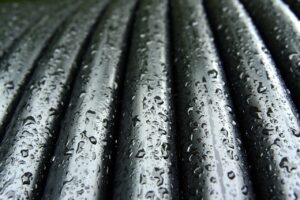
Introduction:
In the intricate tapestry of power distribution systems, the critical linchpin is the reliability of underground cables. The detection and swift resolution of cable faults are pivotal tasks, safeguarding uninterrupted power supply and ensuring the longevity of infrastructure. This blog serves as an expedition into the diverse methodologies employed for detecting underground cable faults, offering insights into their advantages, disadvantages, and varying success rates.
1. Time Domain Reflectometry (TDR):
Overview: Time Domain Reflectometry precisely measures pulse reflection time to identify faults. Highly accurate for open circuits or short circuits, it exhibits diminished effectiveness for high-resistance faults.
Success Rate: With a success rate ranging from 70-90%, TDR is a favored method for specific fault types, offering precision in fault pinpointing.
2. Arc Reflection Method (ARM):
Overview: ARM employs high-frequency voltage pulses to generate an arc at the fault, analyzing the reflected signal to determine fault distance.
Success Rate: Boasting an 80-90% success rate, ARM proves highly effective for a broad spectrum of faults, showcasing reliability in fault detection.
3. Surge Impedance Method (SIM):
Overview: SIM involves sending a high-voltage surge along the cable, locating faults by measuring voltage and current reflections.
Success Rate: Effective for both high and low resistance faults, SIM achieves a moderate to high success rate ranging from 70-85%.
4. High-Voltage Pulse Method (HVPM):
Overview: HVPM utilizes high-voltage pulses to determine fault distance by analyzing reflection times, showcasing versatility in detecting various fault types.
Success Rate: With a moderate to high success rate of 70-85%, HVPM is a reliable method in fault detection.
5. Bridge Method:
Overview: Comparing cable resistance to a known reference, the Bridge Method is valuable for locating open circuits and low-resistance faults.
Success Rate: With a moderate success rate ranging from 60-80%, it serves as a valuable tool in fault detection scenarios.
6. Acoustic Methods:
Overview: Listening for sounds produced by faults, Acoustic Methods provide moderate success rates of 50-70%, particularly effective for certain fault types involving arcs or sparks.
7. Thermal Imaging:
Overview: Using thermal cameras to detect temperature variations, Thermal Imaging offers a moderate success rate of 50-70% for specific types of faults, particularly those causing heating at fault points.
8. VLF (Very Low Frequency) Testing:
Overview: Applying low-frequency AC voltage and analyzing responses, VLF Testing achieves moderate success rates ranging from 60-80% for various fault types.
9. Dissipation Factor Measurement:
Overview: Measuring dielectric losses in cable insulation, Dissipation Factor Measurement yields moderate success rates of 60-75% for locating faults.
10. Cable Path Tracing:
Overview: Using electromagnetic field detectors, Cable Path Tracing achieves moderate to low success rates, ranging from 60-75%, dependent on cable layout and conditions.
11. Ground Penetrating Radar (GPR):
Overview: GPR employs radar pulses to image the subsurface and locate faults with a moderate to low success rate of 50-70%, contingent on soil and cable conditions.
12. Electromagnetic Methods:
Overview: Detecting electromagnetic fields generated by fault currents, Electromagnetic Methods offer moderate to low success rates ranging from 50-70%.
Conclusion:
The success rates provided are approximations, subject to variations based on factors like fault type, soil conditions, cable material, and equipment accuracy. Advancements in technology continually influence these rates. To ensure optimal accuracy and reliability, collaboration with experienced professionals and the use of a combination of methods are recommended. As we navigate the evolving landscape of fault detection, the integration of these methodologies becomes not just a strategy but a commitment to the resilience of power distribution systems.
